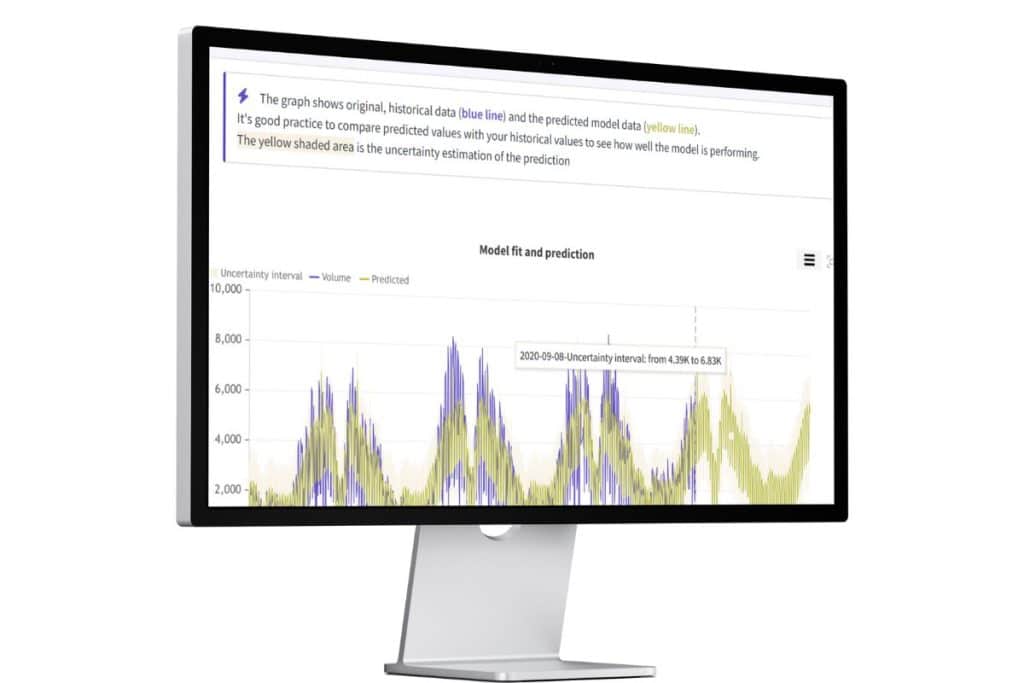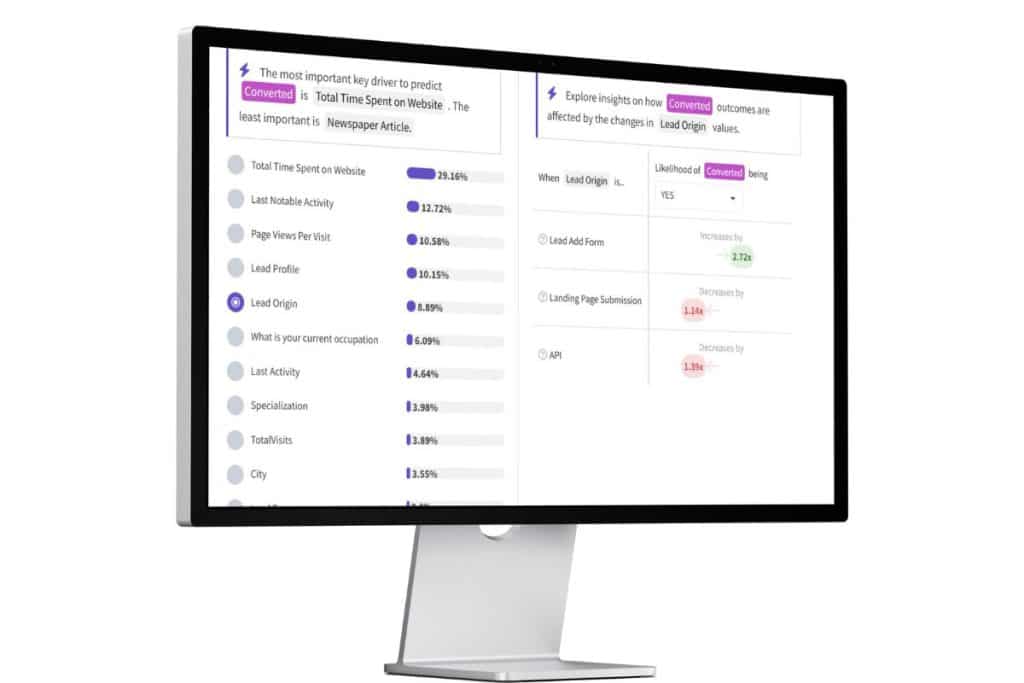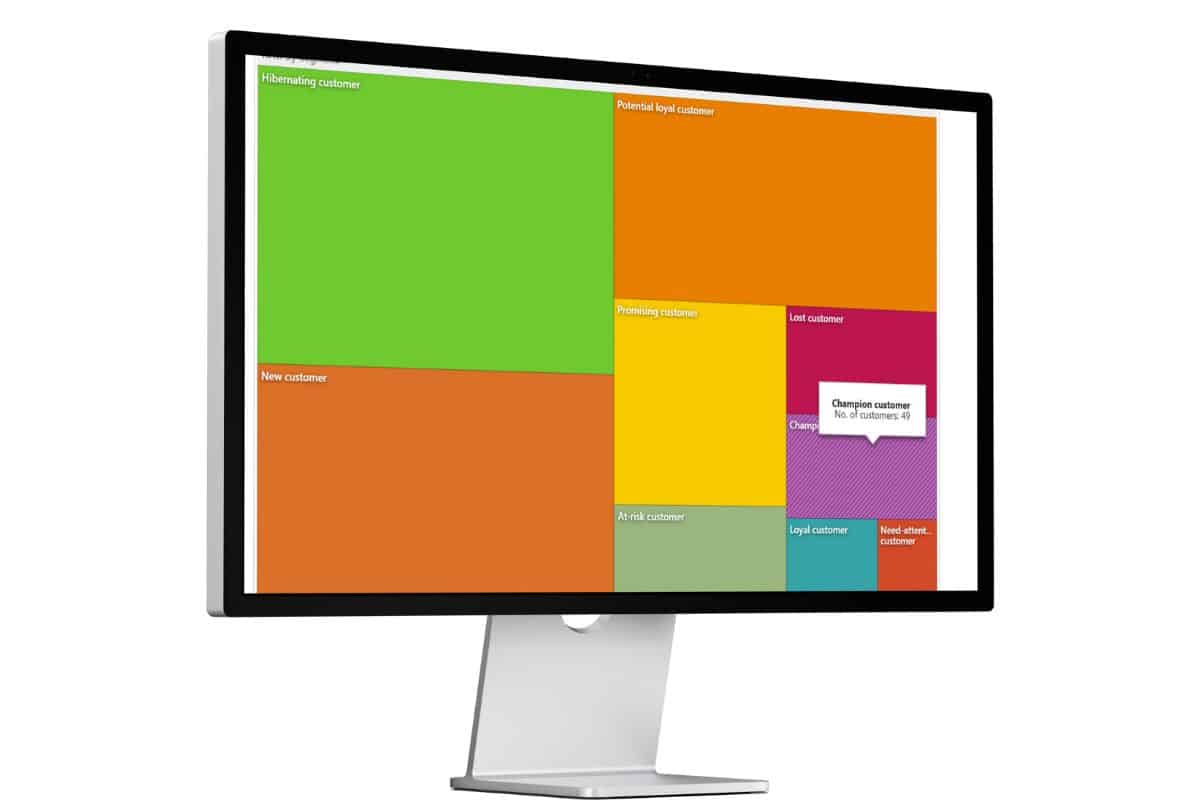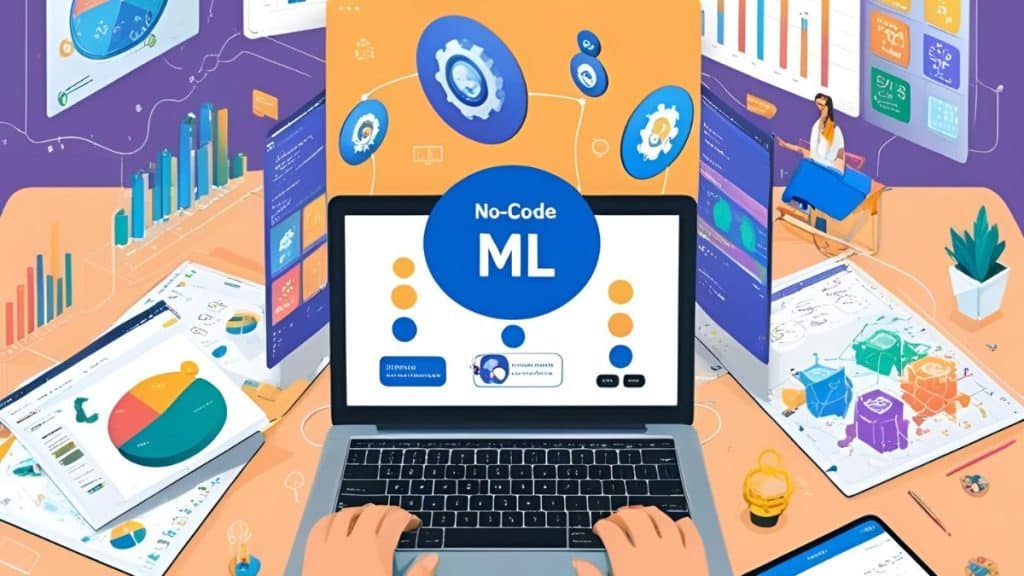Built for Data Analysts
Need Machine Learning Now?
Access machine learning models using no-code. Classification, Regression, Timeseries, Clustering, our tool has it all.
Connect your data and generate insights and value instantly.
Activating a trial gives you 14 days to kick the tires. No card is required.
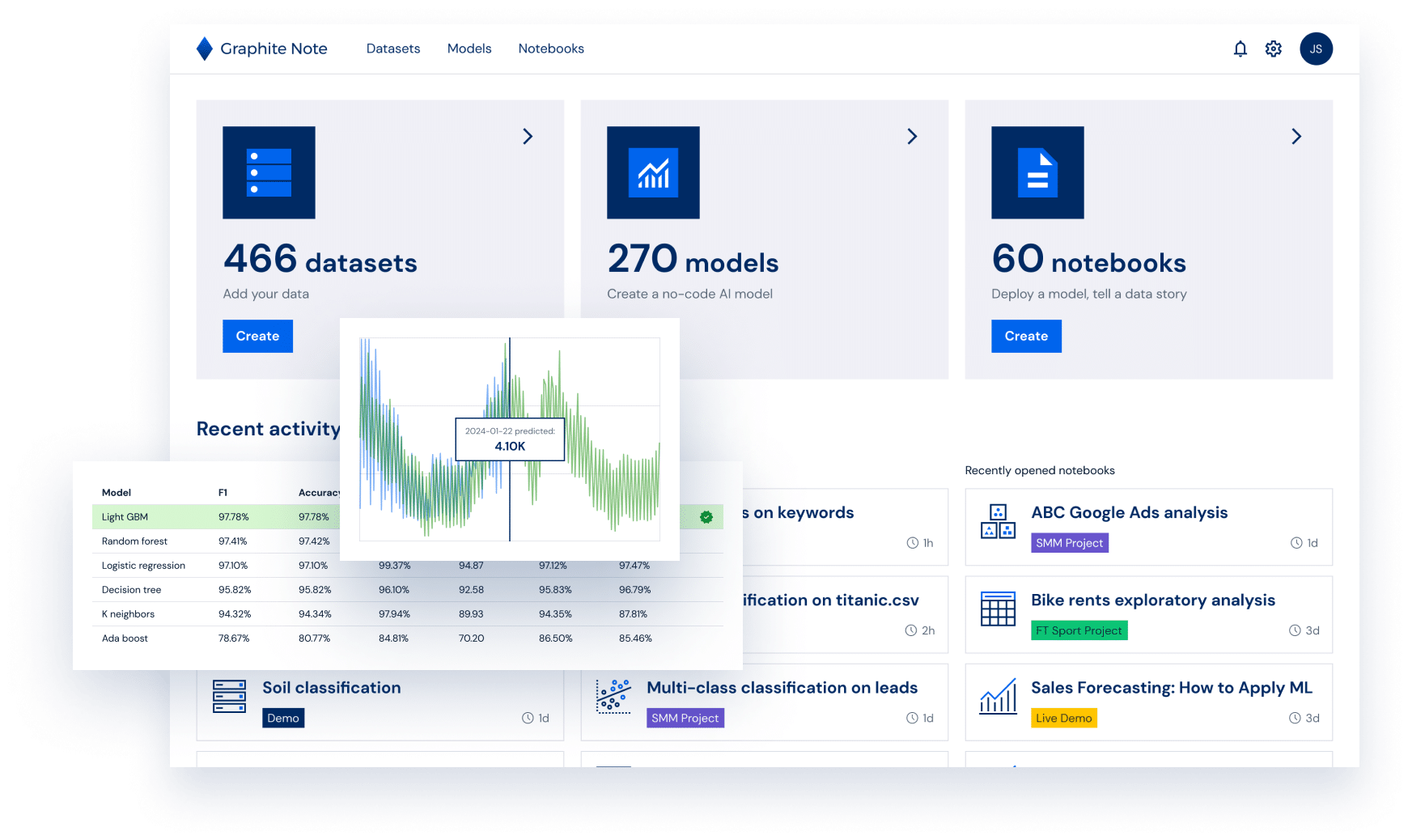
Get access to powerful model templates
Time-series forecasting is looking at recorded data over time to forecast or predict what might happen in the next time period, under the assumption that future trends will be similar to historical trends.
- What revenue are we going to have 6 months from now?
- How much inventory should we stock tomorrow, or 30 days from now, to meet demands?
- How many customers will return next week or month?
- What is the effect of our product promotion and what can we expect from future promotions?
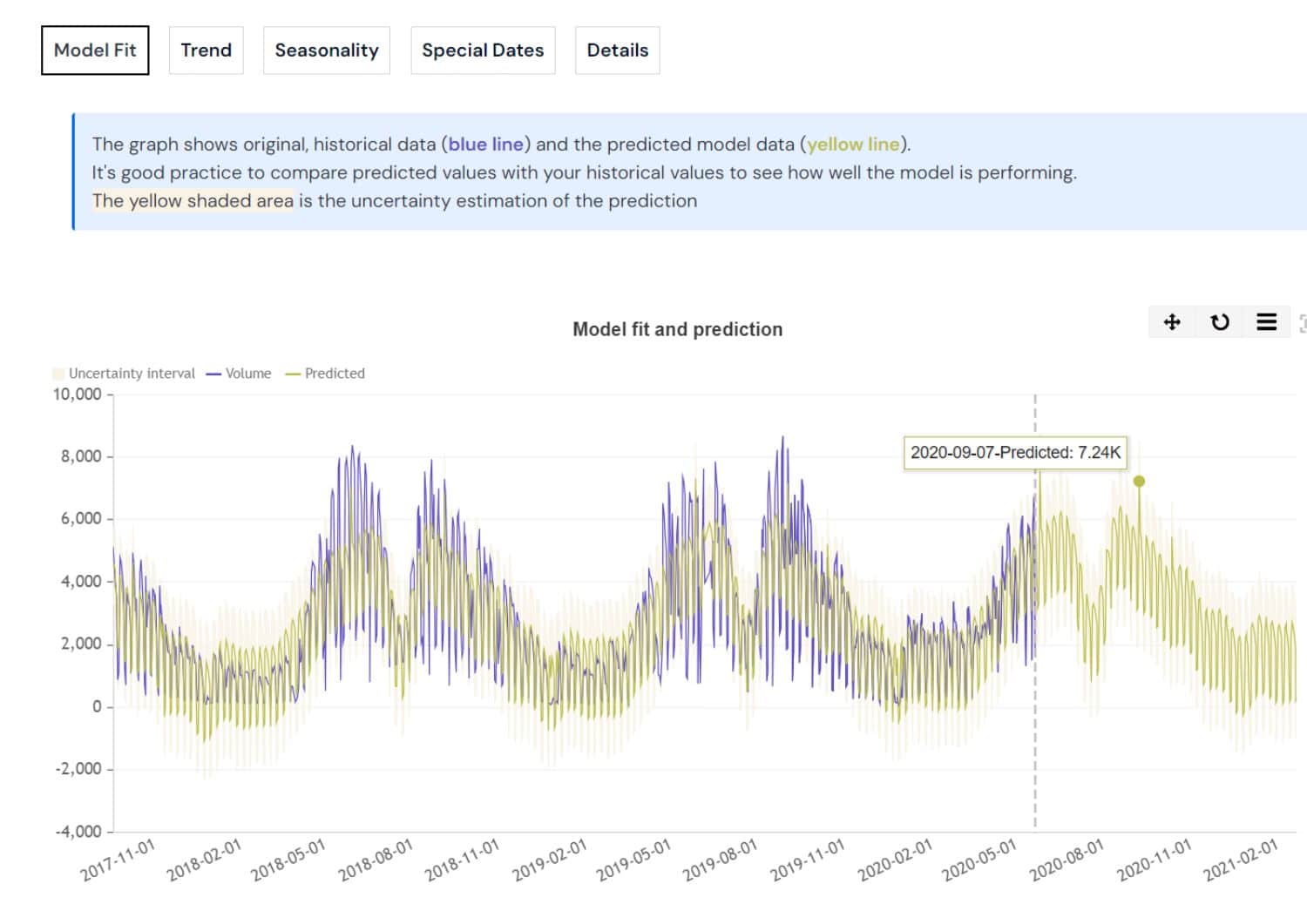
Binary Classification: This is about predicting one of two outcomes based on past data. It helps in deciding whether something will happen or not, like if a customer will make a purchase.
- Predict customer churn: Who stays and who leaves?
- Email campaign effectiveness: Which will be opened, and which ignored?
- Fraud detection in transactions: Legitimate or suspicious?
- Equipment failure predictions: Operate or repair?
- Marketing campaign success: Convert or not?
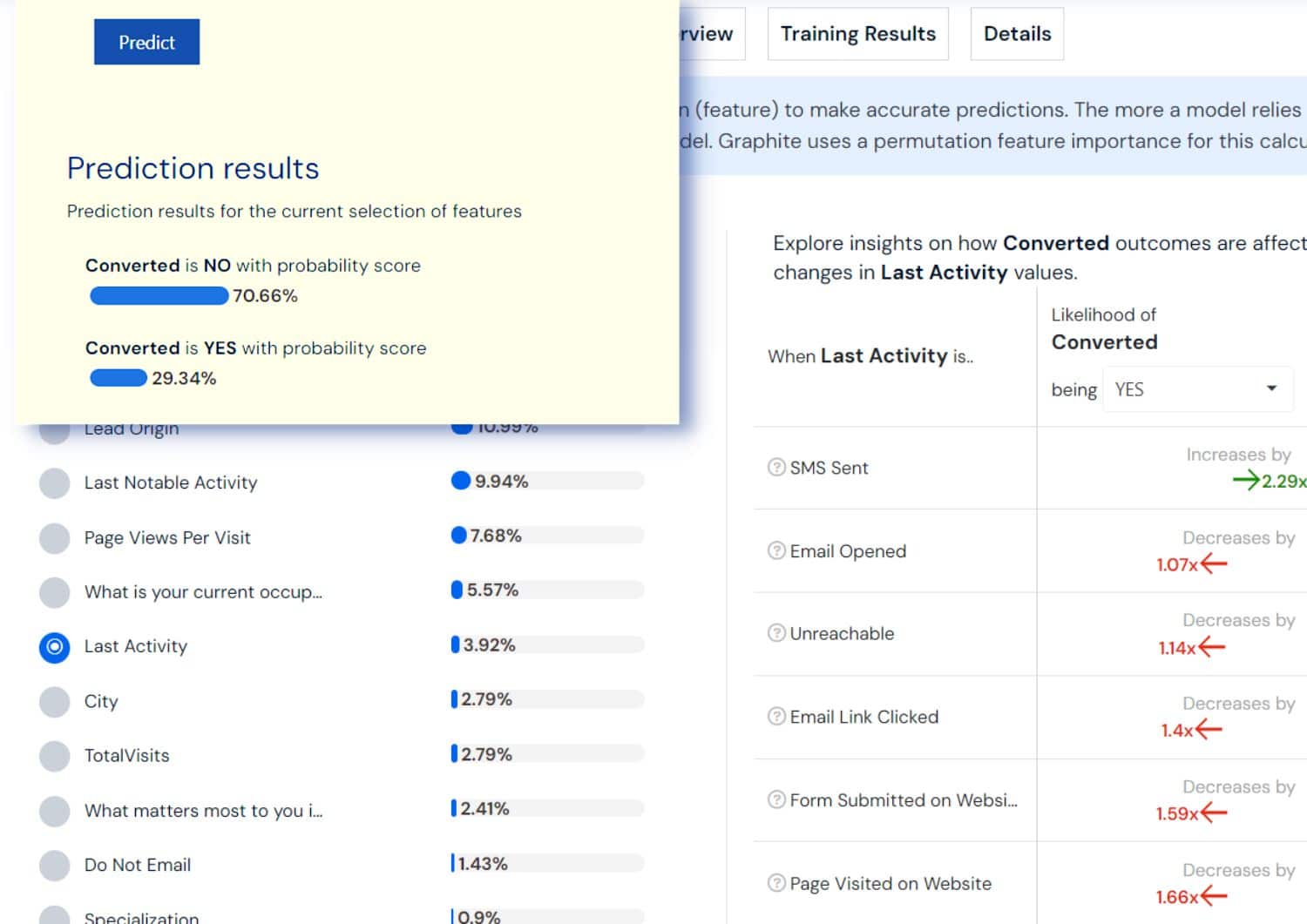
Multiclass Classification: This approach extends beyond binary options, predicting outcomes among three or more categories based on historical data. It's about identifying which specific group an event or item belongs to.
- Predict customer segment: Which category does each customer fit into?
- Content recommendation: What type of content will a user prefer?
- Product categorization: Which category does each product belong to?
- Disease diagnosis: What type of condition does a patient have?
- Sentiment analysis: Is the feedback positive, negative, or neutral?
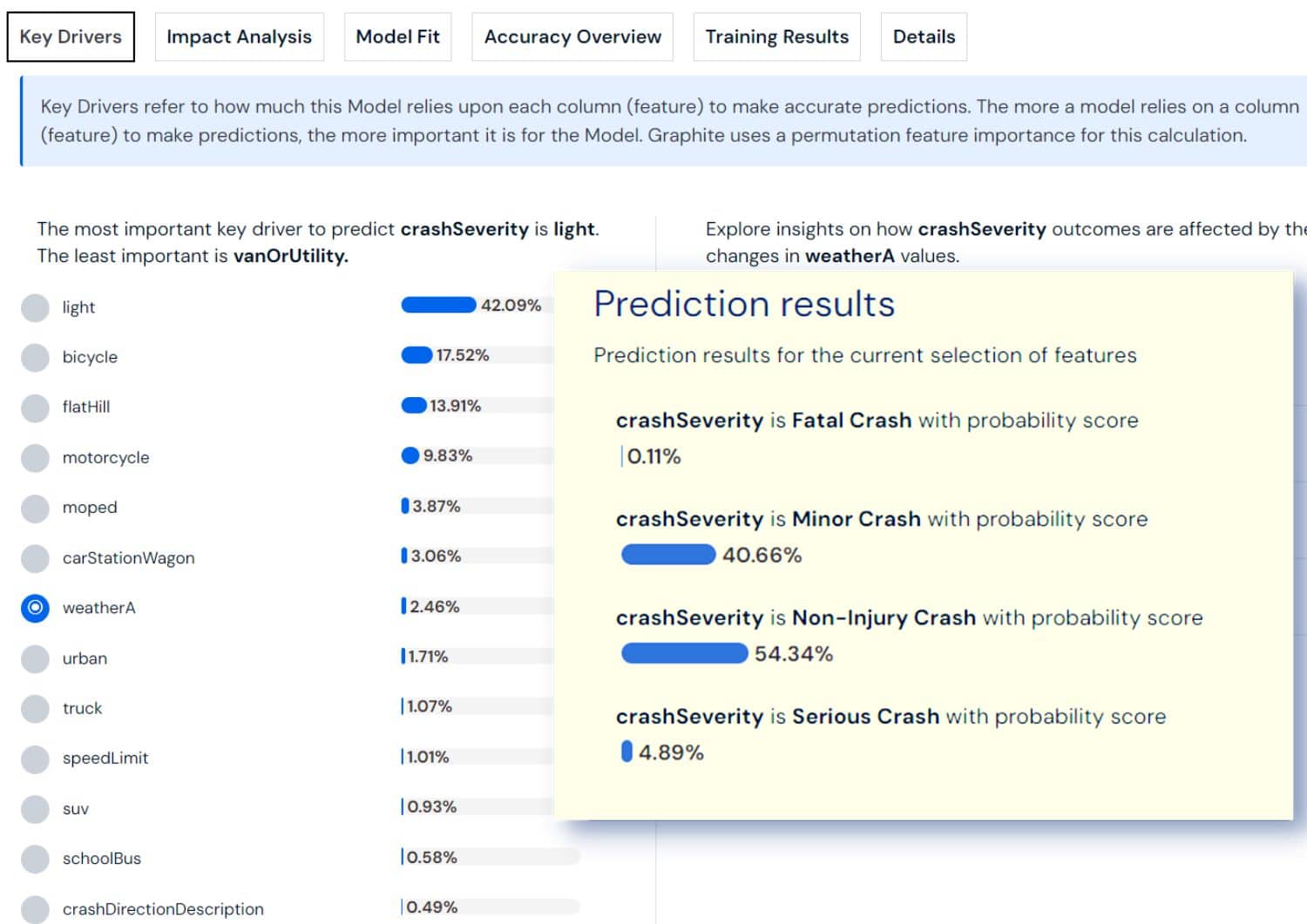
Regression: This method predicts continuous outcomes based on past data. It’s about estimating numerical values, like sales figures or temperatures, rather than choosing between categories.
- Sales forecasting: How much will be sold next quarter?
- Price prediction: What will be the future price of a product or service?
- Demand estimation: How many customers will want this product?
- Energy consumption: How much energy will a building use next month?
- Website traffic: How many visitors will come to the website next week?

Customer Lifetime Value (CLV) Prediction: This method, based on "buy till you die" statistical distribution, estimates the total value a customer will bring to a business over the entirety of their relationship. It's crucial for understanding and maximizing the long-term value of customer relationships.
- Value forecasting: What is the projected value of each customer?
- Relationship duration: How long will a customer stay engaged with the brand?
- Purchase frequency: How often will a customer make a purchase?
- Profit optimization: Which customers are most profitable to focus on?
- Retention strategies: What actions can increase customer loyalty and value?
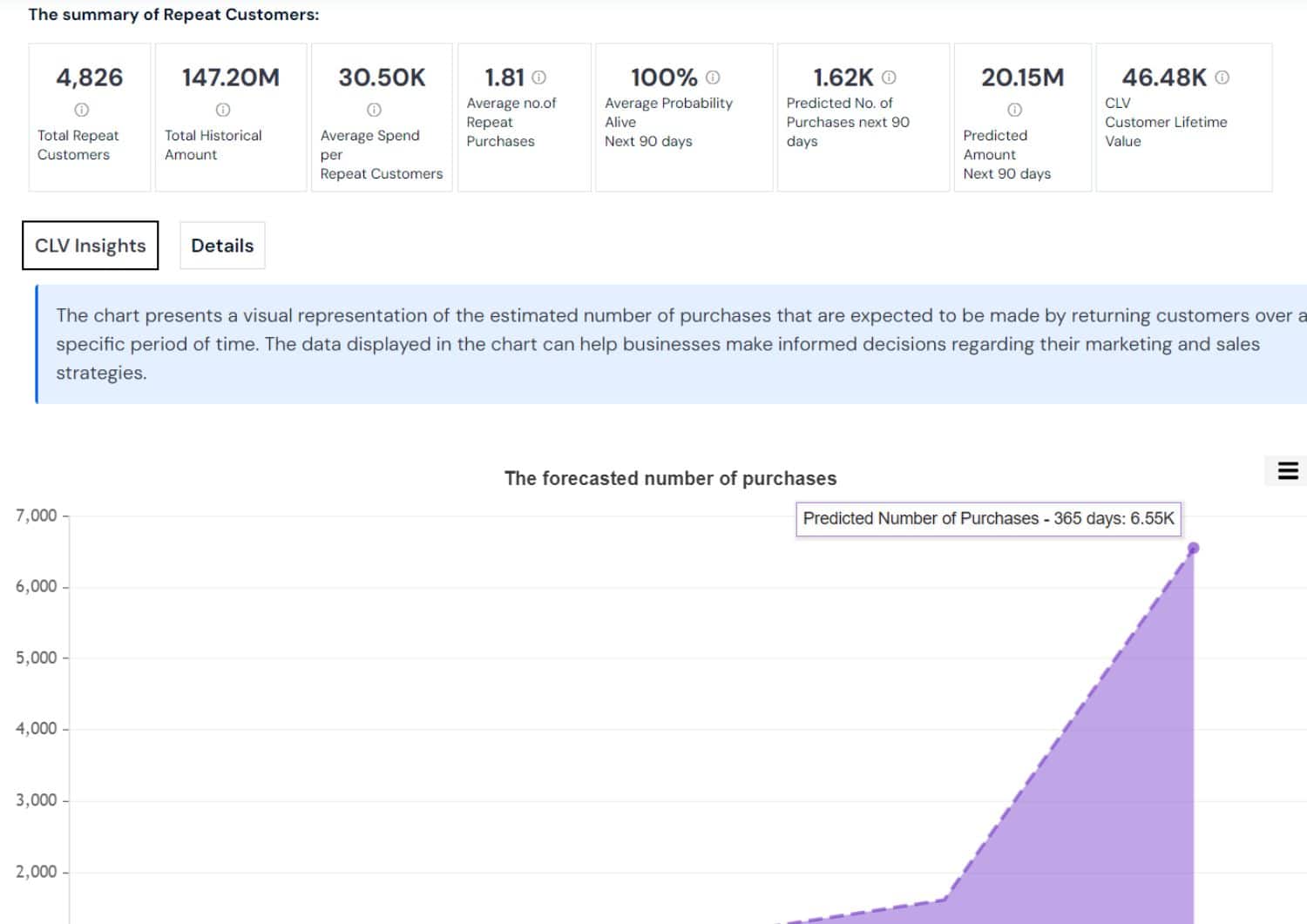
General Segmentation (Clustering): This technique groups similar data points together based on their characteristics, without predefined categories. It's used to discover natural groupings within data, like customer segments or product types.
- Customer behavior: Which customers have similar shopping habits?
- Market segmentation: How can markets be divided based on consumer preferences?
- Product categorization: What products appeal to similar customer groups?
- Anomaly detection: Which data points do not fit into any group?
- Targeted marketing: How to tailor marketing strategies for each segment?

RFM Customer Segmentation: This method analyzes customer value based on three dimensions: Recency, Frequency, and Monetary value. It segments customers into groups to tailor marketing efforts and improve customer engagement strategies.
- Engagement identification: Who are the most recent buyers?
- Loyalty assessment: Who purchases frequently?
- Value analysis: Who spends the most?
- Segmentation for marketing: How to customize communication for each segment?
- Retention focus: Which segments should retention efforts target?

ABC Analysis: This inventory categorization technique divides items into three categories (A, B, and C) based on their importance to the business, helping to prioritize management efforts and resources.
- Priority setting: Which items are critical to business success (A)?
- Efficiency optimization: Which items offer the best balance of cost and value (B)?
- Resource allocation: How to minimize spending on less critical items (C)?
- Stock level management: How to adjust inventory levels for each category?
- Investment focus: Where to allocate resources for maximum impact?
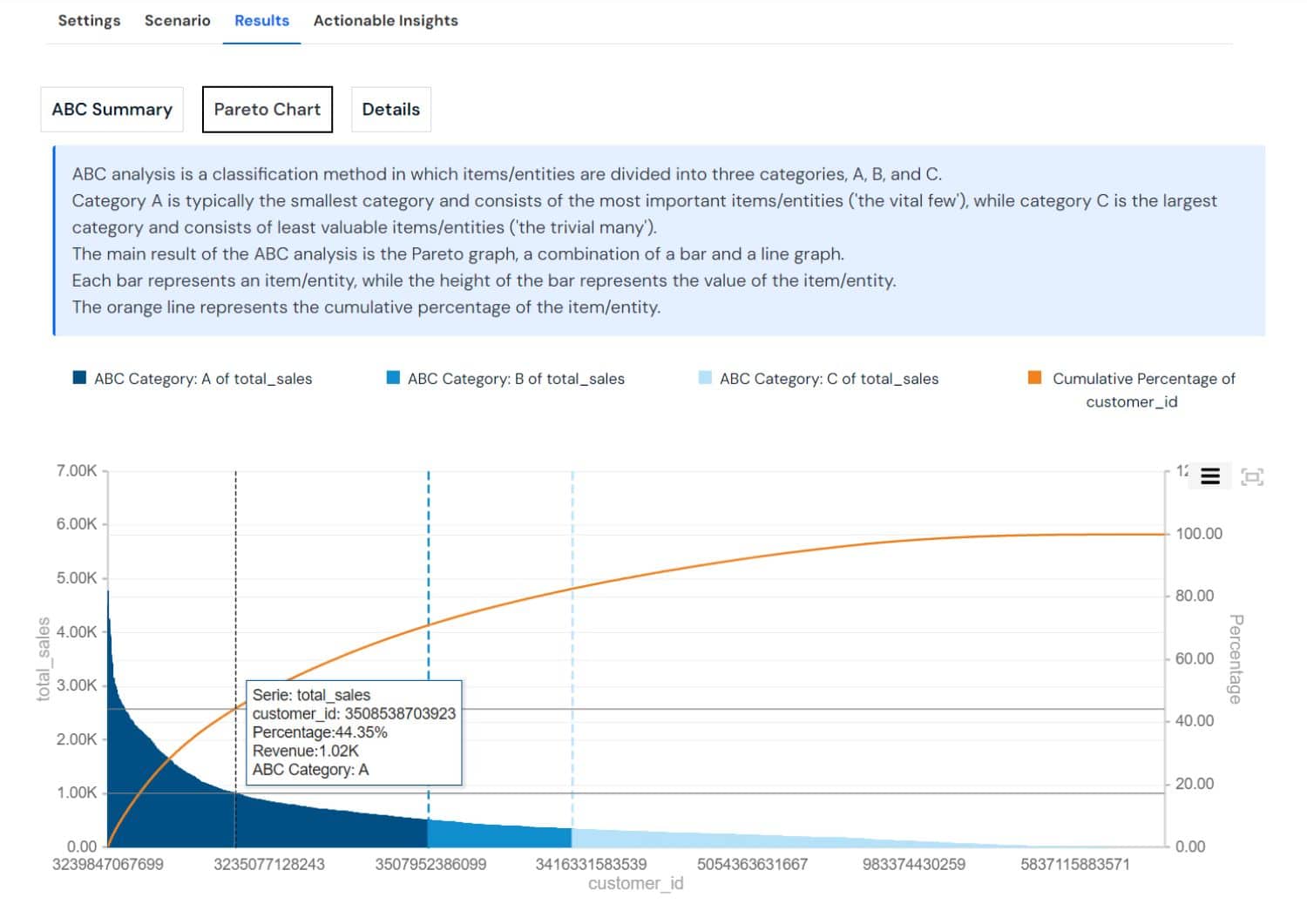
Customer Cohort Analysis: This approach segments customers into cohorts based on shared characteristics or behaviors over time, often focusing on acquisition date. It helps in understanding customer behavior patterns and improving retention strategies.
- Behavior tracking: How do different cohorts behave over time?
- Retention analysis: Which cohorts have the highest retention rates?
- Revenue patterns: How does revenue vary across cohorts?
- Engagement strategies: What strategies work best for each cohort?
- Acquisition optimization: Which acquisition channels bring the most valuable cohorts?

New vs. Returning Customers Analysis: This metric distinguishes between first-time and repeat customers over specific periods, such as weekly or monthly. It's key for understanding customer loyalty and the effectiveness of retention strategies.
- Customer growth: How many new customers are acquired each period?
- Loyalty measurement: What percentage of customers are returning?
- Engagement trends: How does customer engagement differ between new and returning customers?
- Marketing impact: How do acquisition efforts affect new vs. returning customer ratios?
- Retention success: Which strategies are most effective in retaining customers?
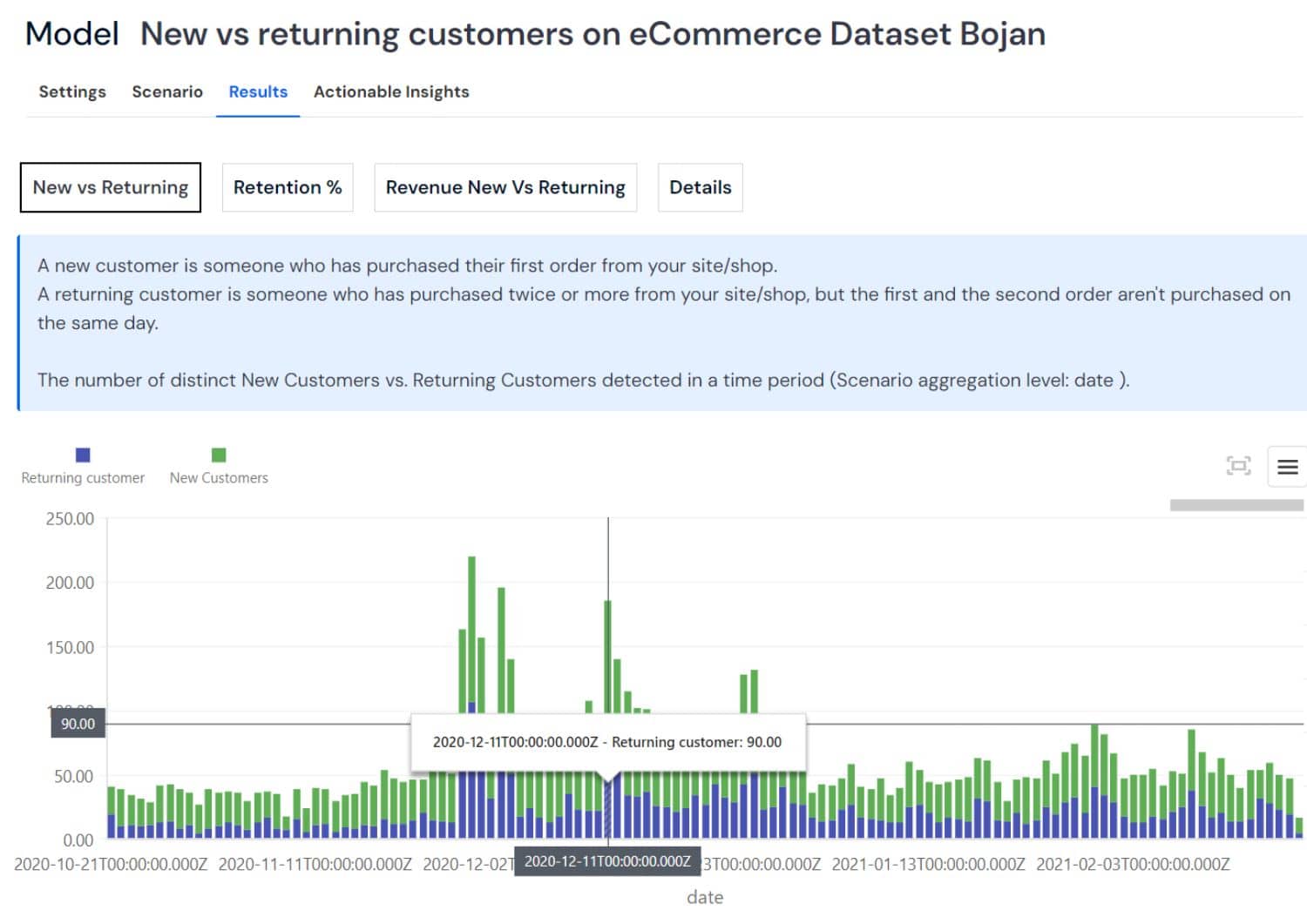
What Makes Graphite Note So Powerful
Machine Learning is hard. We make it simple.
Step 1
Connect to your data
Any tabular business data should do, Graphite Note will automatically pre process and prepare data for AI modeling.
Easily explore patterns, problems and associations in your data.
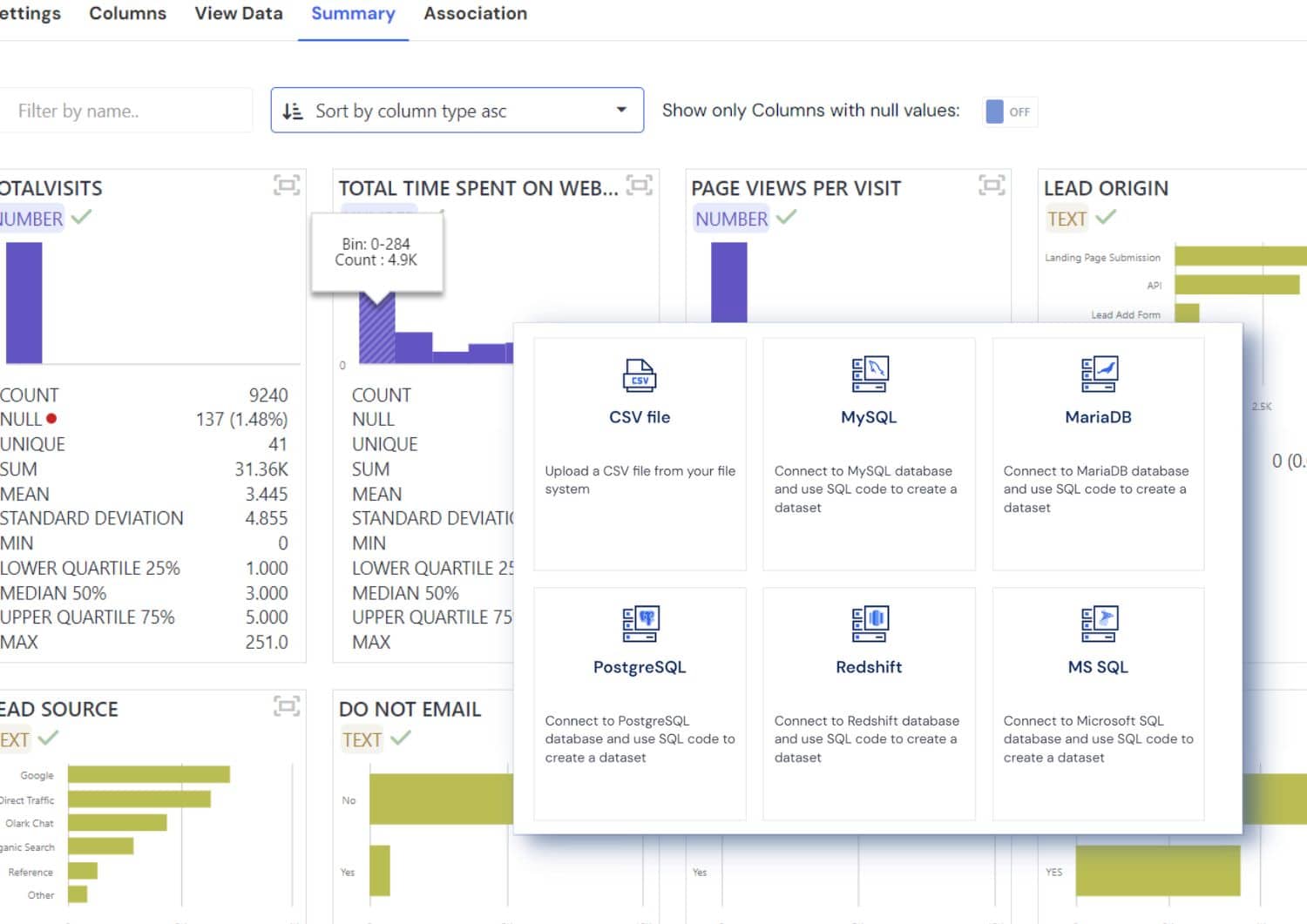
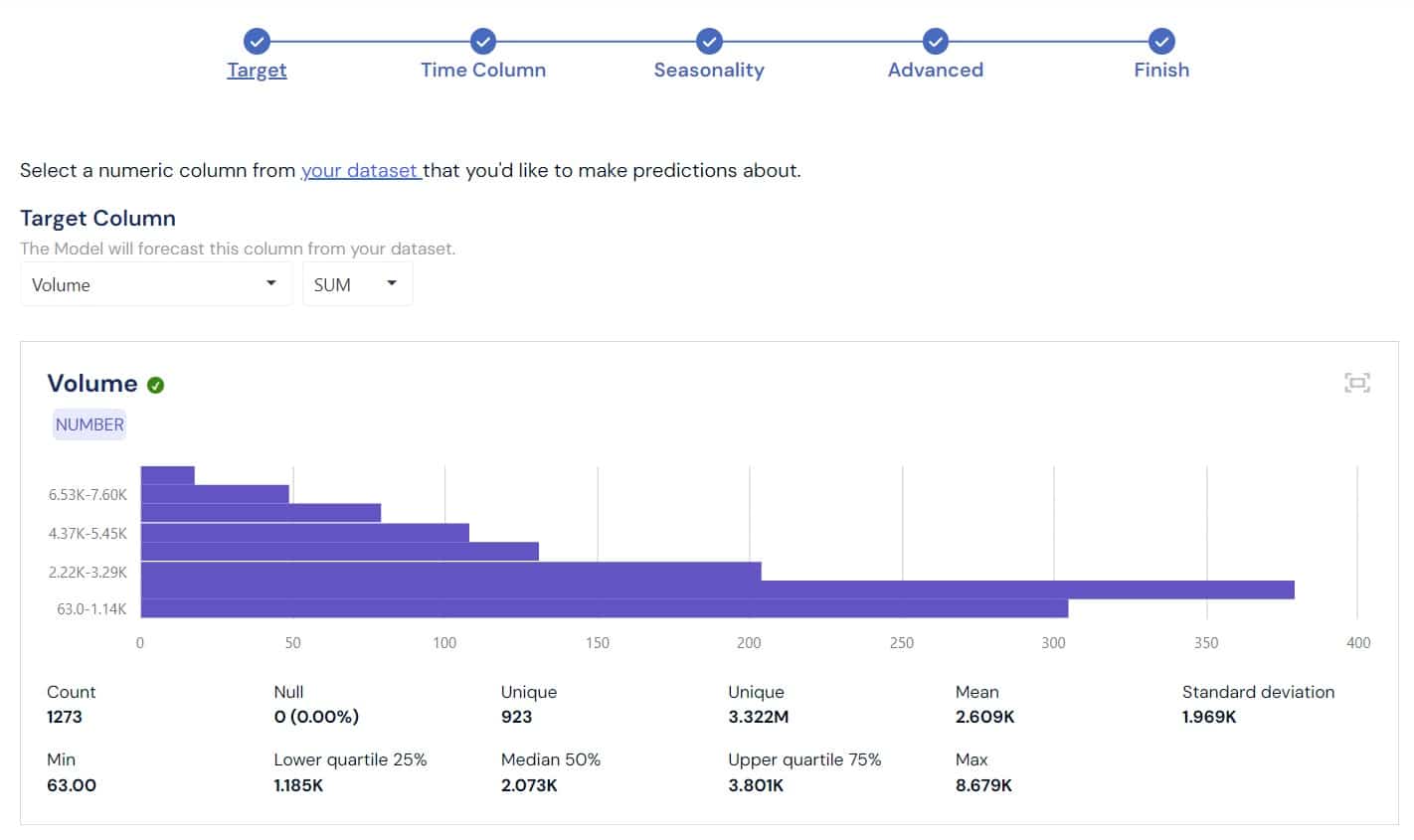
Step 2
Train AI models, no code
Train your AI models without writing single line of code, based on Graphite Note library of AI templates for various business use cases.
Step 3
Understand Key Drivers
Key Drivers Analysis – Graphite Note identifies and presents the critical factors impacting your model’s predictions, empowering your decision-making with clear, data-driven insights.
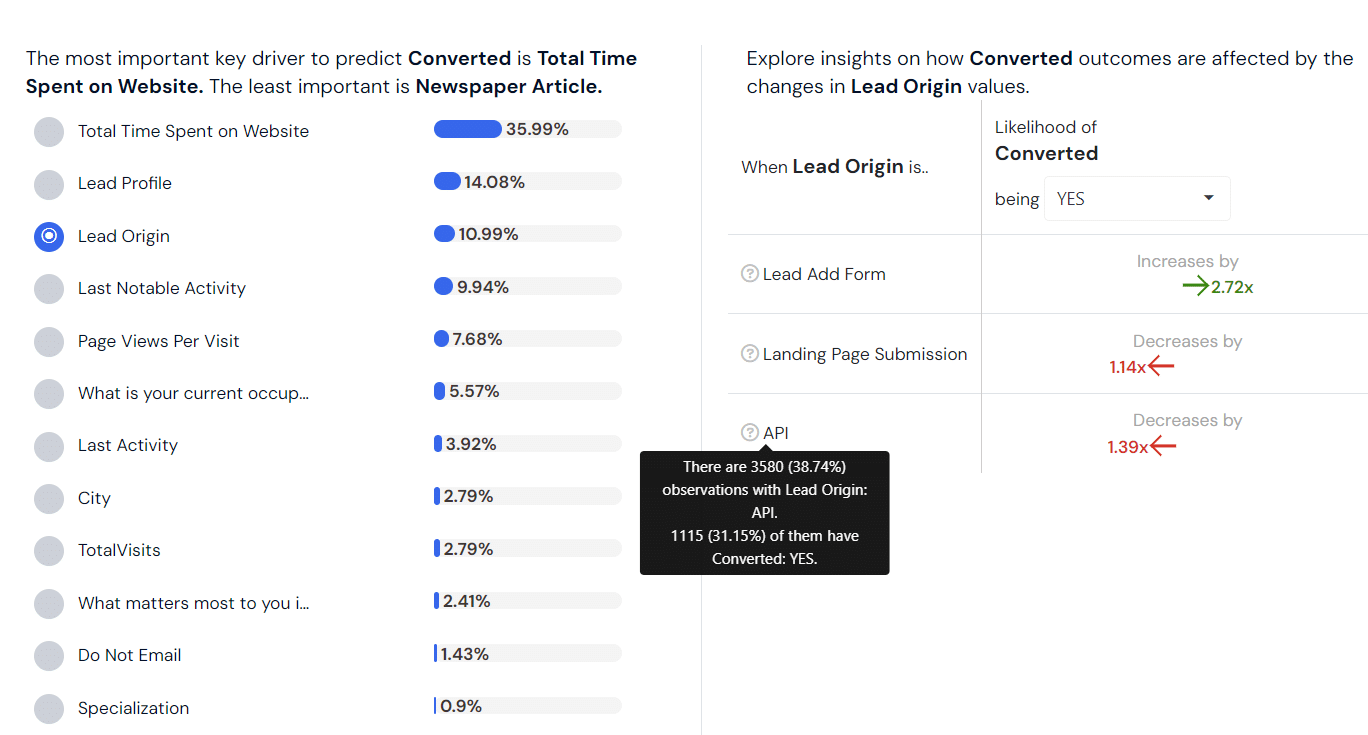
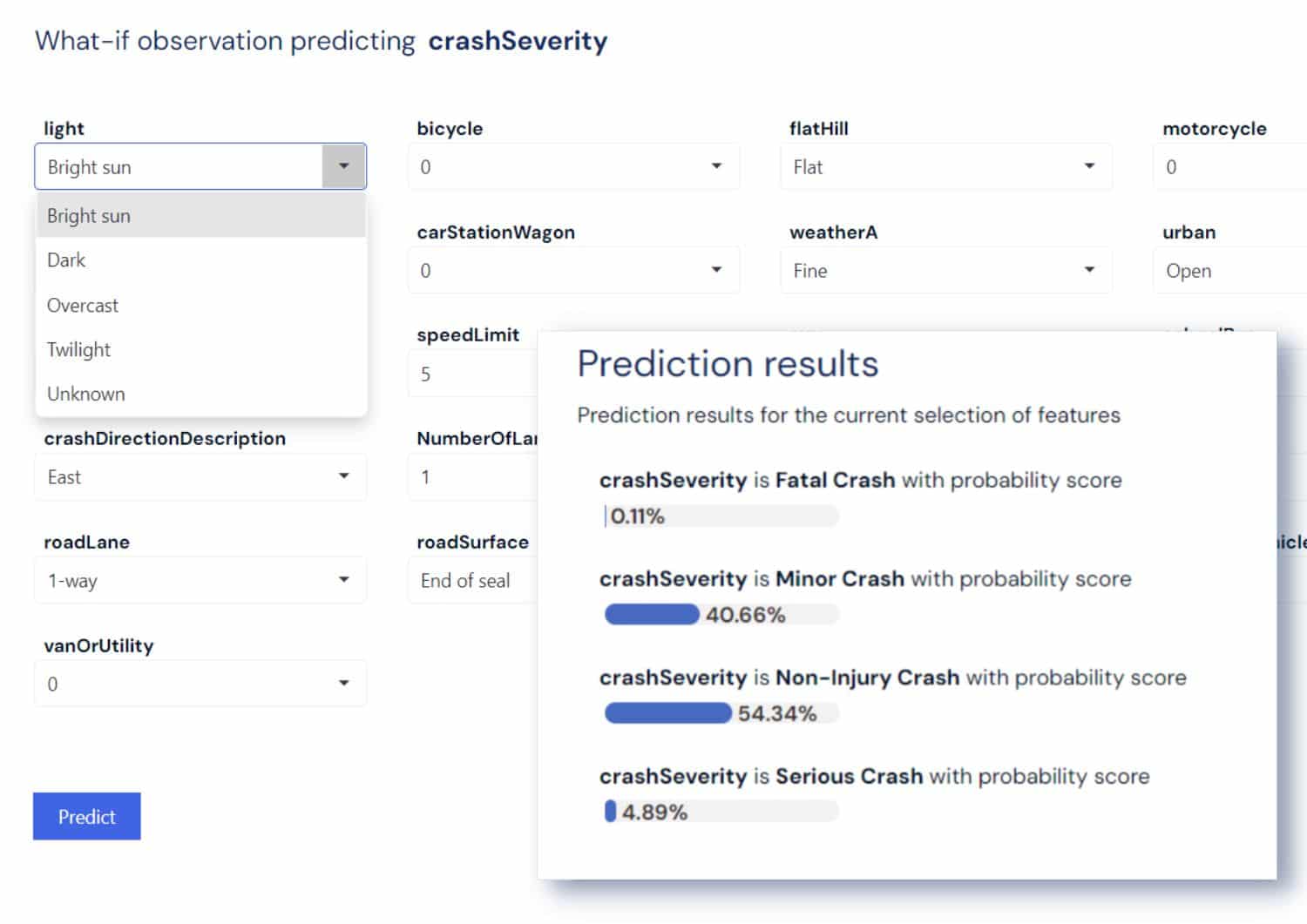
Step 4
Predict Future Outcomes
Predict future trends and behaviors based on your Model.
Additionally, explore “what-if” scenarios – the ability to test various hypotheses and assess their impact without taking real-world risks.
Step 5
Get Actionable Insights
Next-best-actions – Graphite Note GenAI will create tailored narrative and prescriptive analytics to boost your decision making.
This is not a general advice, this is based on your data!
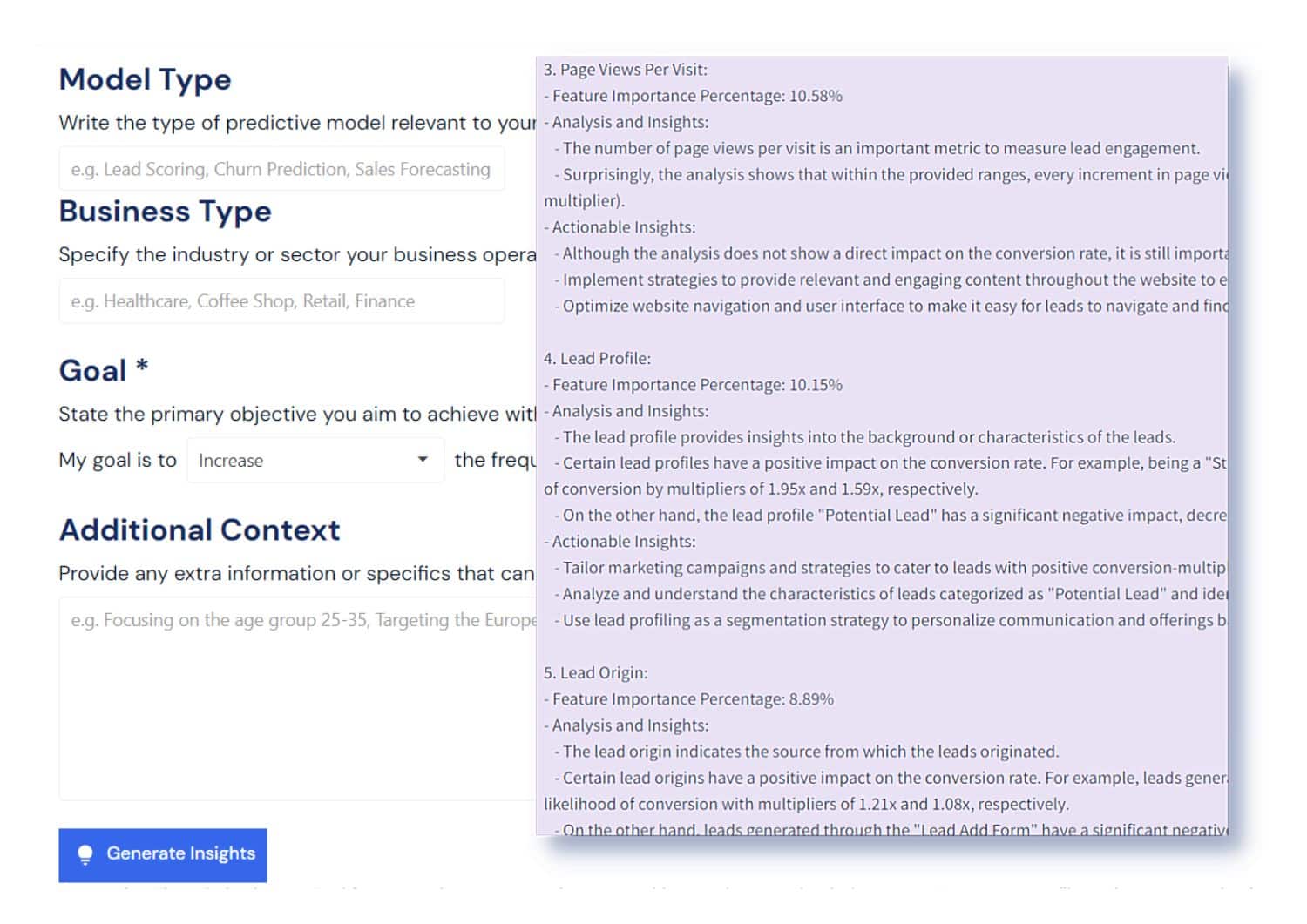
Most Popular Use Cases
Generate, visualize, & share business predictions in just a few clicks.
Predict Lead Conversion
Rank your sales leads by likelihood to convert and help your salespeople prioritize which leads are worth pursuing.
Sales
Marketing
Segment Customers or Products
Divide your customers into segments based on common characteristics and approach them more effectively.
Sales
Marketing
Predict Revenue
Predict your revenue accurately and plan your business goals accordingly.
Sales
Finance
Live Demos Handpicked for You
Sales Forecasting
In this demo example, we are predicting the number of bike rides that a company can expect over a given period of time.
By leveraging the power of machine learning algorithms, it can be possible to accurately predict the number of bike rides a company might have in any given month, day, or hour.
Predictive Lead Scoring
In this demo example, we are using the CRM dataset with historical sales leads.Predictive lead scoring is a powerful tool for businesses of all sizes to quickly and accurately gauge the strength of leads.
With a no-code tool like Graphite Note, businesses can leverage the power of predictive lead scoring without the need for complex coding or IT resources.
RFM Customer Segmentation
RFM (Recency, Frequency, Monetary) Customer Segmentation is crucial for several reasons.
RFM segmentation allows companies to tailor their marketing efforts based on individual customer behavior. By understanding the recency of a customer’s interactions (such as their last purchase or data usage), the frequency of their engagements, and the monetary value they contribute (their billing amount), companies can personalize marketing messages and offers to target specific customer segments more effectively.
Data Security and Protection
At Graphite Note we prioritize the security of your data above all else. Our commitment to data protection is reflected in every aspect of our operations, from software development to data handling.
Secure Software Development
Our software development process incorporates a comprehensive range of data security and vulnerability checks. These checks, both manual and automatic, are integrated throughout the software development lifecycle. This ensures that our platform is designed with robust security measures from the ground up.
Data Encryption
We understand the importance of keeping your data secure at all times. To this end, we employ advanced encryption methods to protect your data. All data is encrypted in-transit using Transport Layer Security (TLS) and at rest, providing an additional layer of security.
Data Encryption at Rest
Data at rest refers to data that is stored on physical or virtual data storage devices, such as databases, data warehouses, or other types of data repositories. We employ advanced encryption methods to protect your data at rest. This means that all your data, whether it's stored in our databases or backups, is encrypted using industry-standard encryption algorithms. This ensures that even if the physical storage were to be compromised, the data would remain inaccessible without the correct encryption keys.
Secure Infrastructure
Our platform is hosted on Amazon Web Services (AWS), a global leader in cloud services. AWS provides a robust, scalable, and secure infrastructure with extensive security capabilities that comply with the most stringent international and industry-specific compliance standards. This includes physical security, infrastructure security, and data protection measures.By leveraging AWS's security features, we can provide an additional layer of protection for your data, ensuring it remains secure and confidential at all times.We are committed to maintaining the highest standards of data security to protect your information, and we continually evolve our security measures to address emerging threats and challenges.
Vulnerability Disclosure Program
We believe in the power of community in maintaining the highest level of security. If you believe you've discovered a potential security issue within Graphite Note, we encourage you to reach out to us at hello@graphite-note.com. Our dedicated security team promptly investigates all reported issues and takes the necessary steps to address them.Your trust is important to us, and we are committed to maintaining the highest standards of data security to protect your information
Graphite Note Blog
Stay Up To Date
ML Tools for Data Analysts are reshaping how teams uncover insights and make decisions in the digital age. As reliance...






